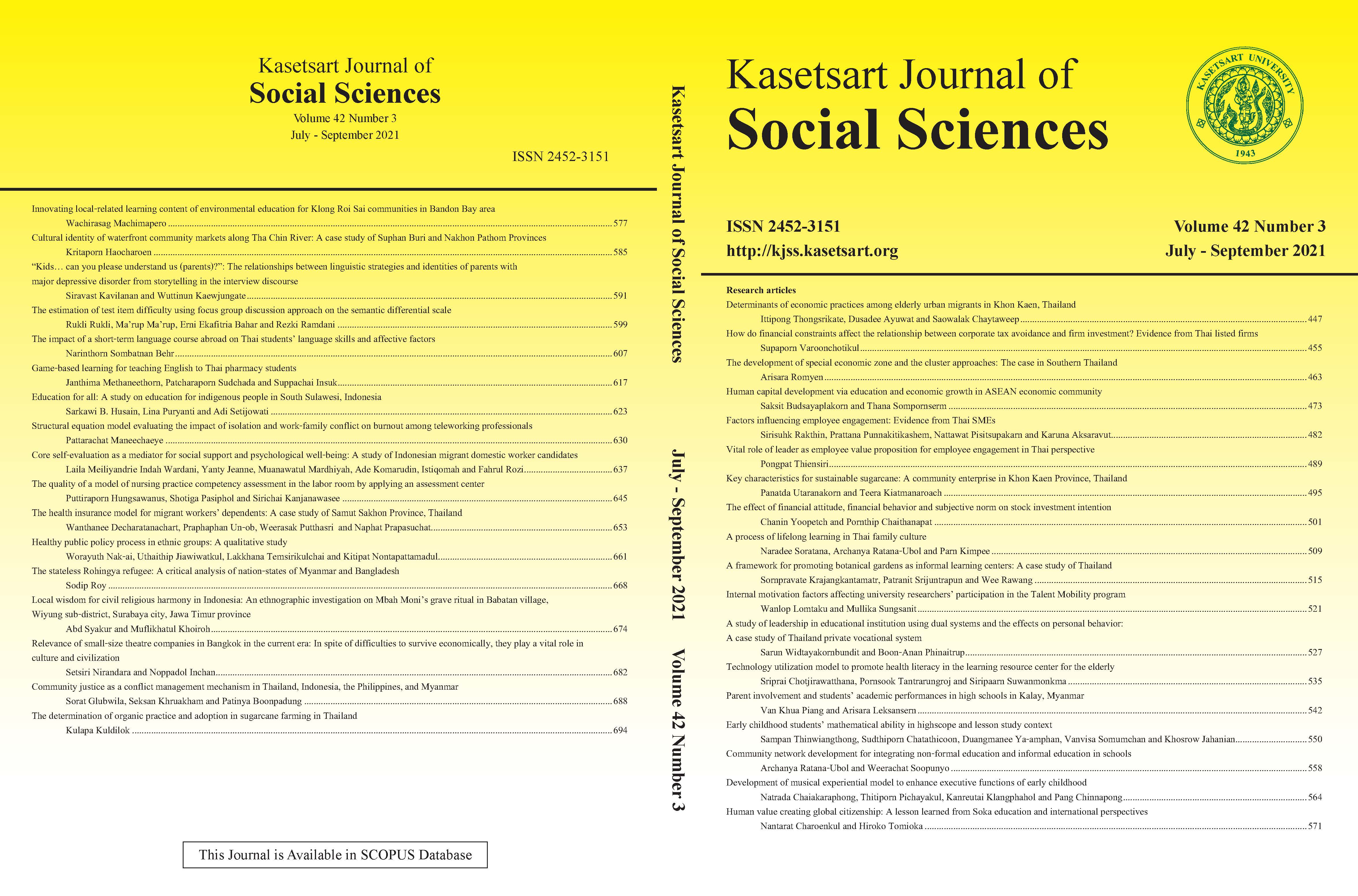The development of special economic zone and the cluster approaches: The case in Southern Thailand
Keywords:
clustering validation measurements, hierarchical agglomerative clustering, k-means clustering algorithm, model-based clustering, Songkhla Special Economic ZoneAbstract
A Special Economic Zone means a key role in the development of regions. This raises the question of whether production sectors can be designed to facilitate clustering. In this paper, we determine the SEZ in Southern Thailand. For the clustering analyses, the K-means algorithm, the Hierarchical clustering algorithm and the Model-Based clustering algorithm were applied as well as clustering
validation measurements being carried out. Moreover, the Silhouette width (0.73), and Dunn index (for 4 cluster = 0.983 against 5 cluster = 0.232) were executed to ensure the clustering validation. Consequently, the four optimal clusters, consisting of cluster 1 (AGRI, SALE), cluster 2 (ELEC, HOTE, TRAN, FINAN, ESTE), cluster 3 (FISH, CONS), and cluster 4 (MANU, MIN), were specified. These classified tier clusters explicitly demonstrate current economic performance at Songkhla’s SEZ. The policy-maker can adopt this clustering scheme to gain advantages through SEZ.
Downloads
Published
How to Cite
Issue
Section
License

This work is licensed under a Creative Commons Attribution-NonCommercial-NoDerivatives 4.0 International License.
This is an open access article under the CC BY-NC-ND license http://creativecommons.org/licenses/by-nc-nd/4.0/










